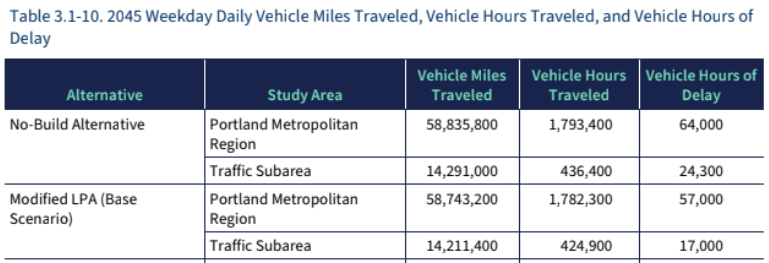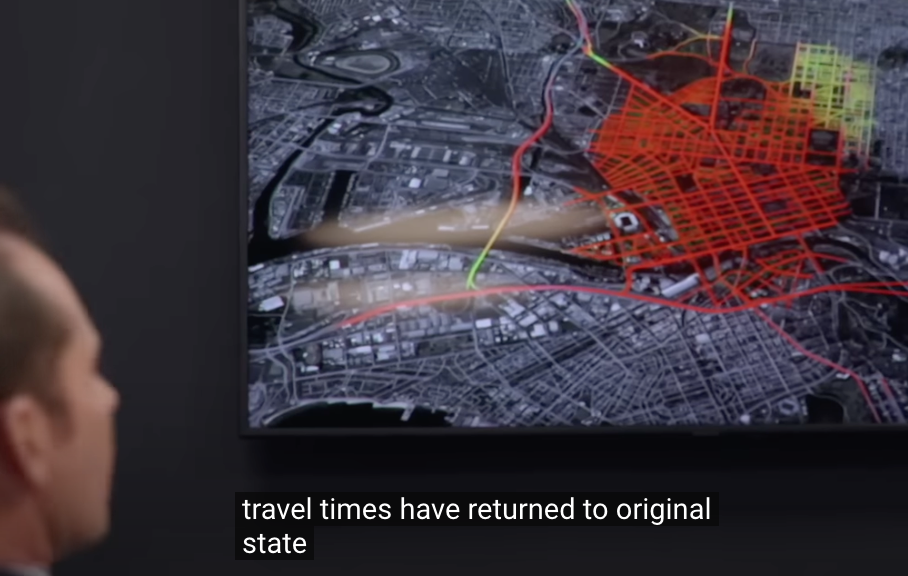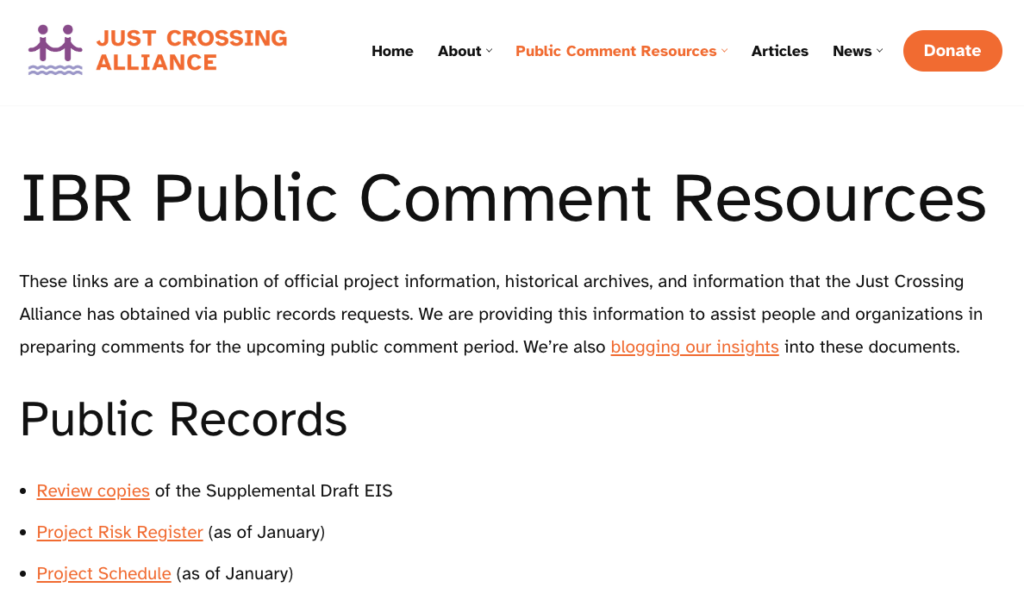The $7.5 Billion Interstate Bridge Replacement project will save the average commuter just 30 seconds in daily commute time
IBR officially determined that “leaking” the project EIS would result in “negative public reaction” to the project
Guess what: We have an advance copy of the draft EIS: You can now see what they don’t want you to see.
Oregon and Washington DOTs claim that a massively widening I-5 bridge and approaches is needed to fight congestion between Portland and Vancouver—but their own traffic modeling shows the project will make almost no difference in average commute times.
As we wrote last month, via a public records request, No More Freeways has obtained a copies of previously confidential IBR planning documents that have key facts about the project which would build a 5-mile long, 10- or 12-lane wide highway between Portland and Vancouver, t at cost of $7.5 billion (and likely more). One of the reasons they kept these documents secret was because they were afraid that a “leak” of the document would adversely affect public opinion. The project’s previously secret risk register reported:
During the preparation of a draft Supplemental Environmental Impact Statement (DSEIS) admin drafts are shared outside of partner agencies and leaked to the public, resulting in negative public reaction and potentially hindering the decision-making process. The potential negative public reaction could lead to increased pressure on decision-makers to reject the proposal or make changes to it, which could ultimately delay or impact funding to the project
What is it, exactly that they don’t want you to know?
Spending $7.5 billion will save the average commuter 30 seconds a day
Well for one thing, spending $7.5 billion (or more) will do virtually nothing to speed up commutes in the project area. The project’s draft Environmental Impact Statement presents data on how far people will travel, and how many hours they will spend traveling. The project’s traffic studies, based on the Metro Regional Travel Demand Model, compare how much time we’ll spend traveling in 2045 depending on whether the IBR project is built (the “Build” scenario) or not build (the “No Build” scenario.). These estimates are summarized for the project area (the portion of the region involving travel affected by the project). This comes from Draft Environmental Impact Statement’s chapter on travel.

From this data its easily possible to figure out how much faster this multi-billion dollar project will make things. For example, in the “No-Build” scenario, we’ll drive about 14.3 million miles per day, and spend about 436,000 hours making those trips. If you divide the number of miles by the hours of travel, you get an average speed of 33 miles per hour (in the No-Build). To be sure, in in the “Build” scenario we would drive almost the same number of miles (14.2 million) but spend about 12,000 fewer hours doing so, which results in an increase in speed of . . . 0.4 miles per hour.
| No-Build | Build | |
| Miles per Day | 14,291,000 | 14,211,000 |
| Hours per Day | 436,400 | 424,900 |
| Miles Per Hour | 33.0 | 33.4 |
| Average Trip | 7.1 | 7.1 |
| Time (Minutes:Seconds) | 13:00 | 12:45 |
If that doesn’t sound like much, that’s because it isn’t. That’s well within the likely margin of error of Metro’s ability to forecast future traffic and travel times, which means in statistical sense, the difference is really zero. But even if it is the 0.4 miles per hour improvement that IBR claims, should we care?
To put that gain in context, let’s look at the typical commute trip in the region. According to Metro, the average one-way commute in Portland is 7.1 miles. By speeding trips up from 33.0 miles per hour to 33.4 miles per hour, the Interstate Bridge Replacement Project will shave about 15 seconds off the average commute. On a daily basis, that works out to a savings of 30 seconds. Is that worth $7.5 billion, and probably a great deal more? You be the judge.
If anything, the Metro model, as used by IBR, probably understates the effectiveness of the project, because it fails to fully account for the effects of induced demand: adding more capacity will likely encourage additional travel, and that added travel will cause congestion to return (and travel times to degrade) to pre-construction levels. The widely documented “fundamental law of road congestion” underscores the futility and waste of trying to solve congestion by adding more road capacity; the science is neatly summarized by the brilliant Australian show “Utopia.”
Want to know more?
The Just Crossing Alliance has posted a copy of the Draft Supplemental Environmental Impact Statement on its website.
We invite the public to take a close look. In the coming days, we’ll have more to say about what’s in the document that the Washington and Oregon highway departments didn’t want you to see.


